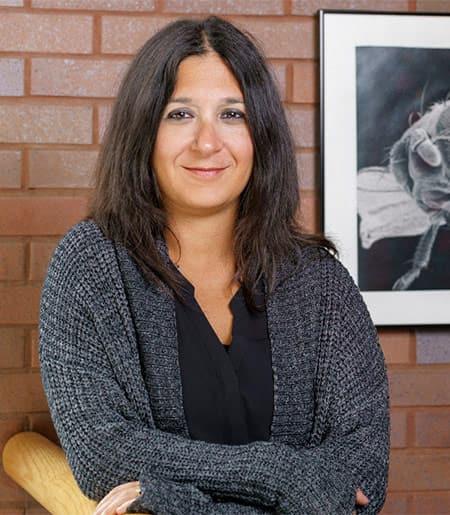Overview
Nilay Yapici is an Associate Professor at Cornell University and Nancy and Peter Meinig Family Investigator. Her research focuses on understanding how animals make behavioral decisions by integrating their physiologic states and external sensory stimuli received from the environment. She earned her BA in molecular biology and genetics from Bogazici University in Turkey and went on to earn a PhD in 2008 at University of Vienna where she worked with Barry Dickson at the Research Institute of Molecular Pathology (IMP). She completed her postdoctoral training with Leslie Vosshall at the Rockefeller University before joining to Cornell as an Assistant Professor in 2016.
Courses
BIONB 2220 - Neurobiology and Behavior II: Introduction to Neuroscience (6 lectures)
BIONB 4200 : Topics in Neurobiology and Behavior (alternate years)
BIONB 4550 : Molecular and Neural Basis of Decision Making (alternate years)
Research Focus
Animals make state-dependent decisions by integrating sensory cues and internal motivational drives in the nervous system. Our lab is specifically interested in understanding the neural basis of foraging and food intake decisions. We use genetically tractable model organisms, the fly (Drosophila melanogaster) and the house mouse (Mus musculus), to understand the fundamental principles of how motivational states regulate food intake decisions on the level of molecules, cells and circuits. We use techniques ranging from high resolution quantitative measurements of behavior, multiphoton imaging, neural tracing and genetics.
Publications
- Yapici, N. (2025). Gut-brain communication in Drosophila Melanogastor. Current Opinion in Neurobiology, 94, 103096. pdf
- Cui, X., Gruzdeva, A., Kim, H., & Yapici, N. (2022). Of flies, mice and neural control of food intake: lessons to learn from both models. Current Opinion in Neurobiology, 73, 102531. pdf
- Meiselman, M. R., Alpert, M. H., Cui, X., Shea, J., Gregg, I., Gallio, M., & Yapici, N. (2022). Recovery from cold-induced reproductive dormancy is regulated by temperature-dependent AstC signaling. Current Biology, 32(6), 1362-1375. pdf
- Aragon, M.J., Mok, A.T., Shea, J., Wang, M., Kim, H., Barkdull, N., Xu, C. and Yapici, N., 2022. Multiphoton imaging of neural structure and activity in Drosophila through the intact cuticle. eLife, 11, p.e69094. pdf
- Mok, A., Shea, J., Wu, C., Xia, F., Tatarsky, R., Yapici, N. and Xu C., 2022. Spatially resolved measurements of ballistic and total transmission in microscale tissue samples from 450 nm to 1624 nm. Biomed. Opt. Express, 13, 438-451. pdf
- Min, S., Oh, Y., Verma, P., Whitehead, S.C., Yapici, N., Van Vactor, D., Suh, G.S. and Liberles, S., 2021. Control of feeding by Piezo-mediated gut mechanosensation in Drosophila. Elife, 10, p.e63049. pdf
- Yapici, N., Cohn, R., Schusterreiter, C., Ruta, V., & Vosshall, L. B. (2016). A taste circuit that regulates ingestion by integrating food and hunger signals. Cell, 165(3), 715-729. pdf
- Yapici, N., Kim, Y. J., Ribeiro, C., & Dickson, B. J. (2007). A receptor that mediates the post-mating switch in Drosophila reproductive behavior. Nature, 451, 33-37. pdf
In the news
- New Research Sheds Light on Origins of Social Behaviors
- Nilay Yapici
- New research sheds light on origins of social behaviors
- NBB Awards 2022-23
- Campus rallies to support Syria, Turkey earthquake survivors
- Fruit flies use two muscles to control pitch for stable flight
- Temperature, reproduction link holds promise for insect control
- The biology of hunger
- How the brain controls food intake
- Neurobiology professor receives grant for research on hunger
- Neuroscientist receives grant for aging research
- CURB galvanizes Puerto Rican students’ lab experience
- NeuroNex - A Radical Collaboration
- $9M grant will create neurotech research hub at Cornell
- Neurobiologist Nilay Yapici named Pew scholar
- Brito, Lambert, Yapici, Lancaster receive Sloan Fellowships

